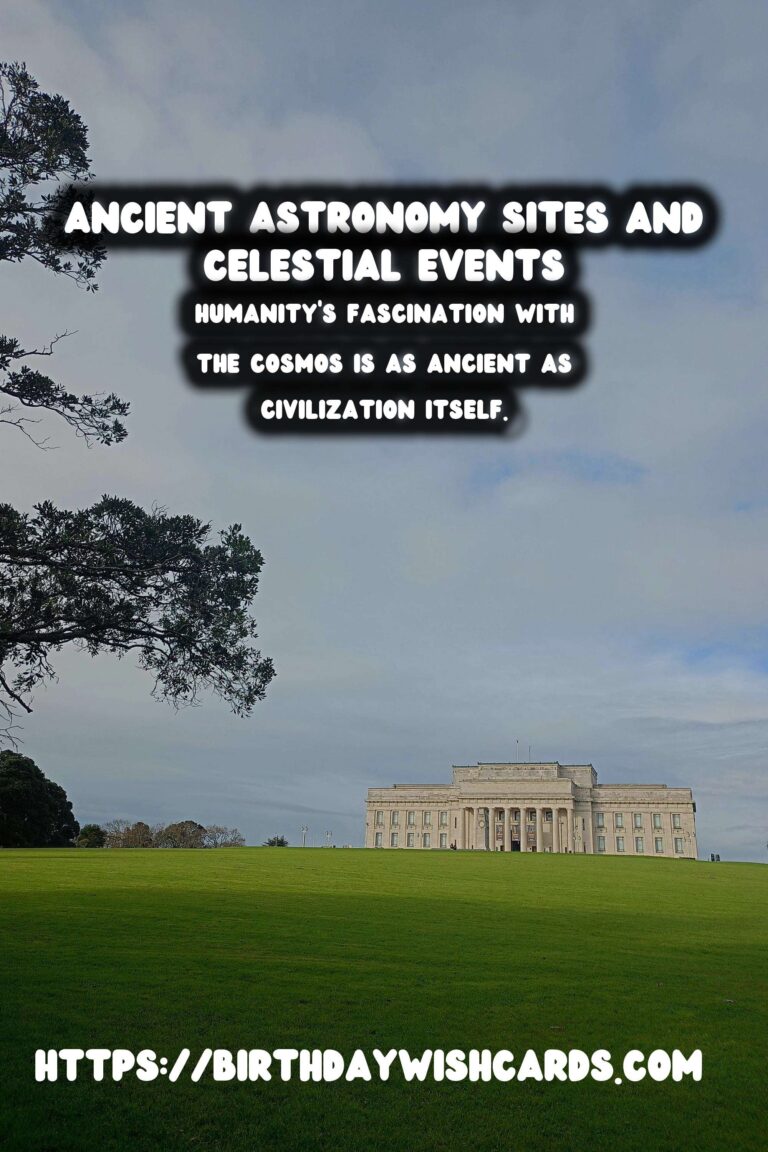
Humanity’s fascination with the cosmos is as ancient as civilization itself. From the earliest days, humans have constructed monuments and sites aligned with the celestial cycles of the sun and moon. Among these architectural marvels are sites that celebrate the solstices and equinoxes, vital markers of the Earth’s seasonal changes.
The Importance of Solstices and Equinoxes
In ancient times, understanding the movement of the sun was crucial for agricultural societies, as it directly impacted farming cycles. The solstices, marking the longest and shortest days of the year, and the equinoxes, when day and night are of equal length, were vital events for ancient peoples. These natural phenomena guided planting and harvest times, influencing the rhythm of life and religious practices.
Stonehenge: England’s Iconic Stone Circle
No article on ancient astronomy would be complete without mentioning Stonehenge. Located on Salisbury Plain, this prehistoric monument is one of the most famous solstice-aligned sites. Researchers believe Stonehenge was constructed to align with the summer solstice sunrise and the winter solstice sunset, providing insights into our ancestors’ astronomical understanding.
Chichen Itza: The Serpent of Light
The Mayan city of Chichen Itza, located in present-day Mexico, is another prominent site associated with equinox observations. During the spring and autumn equinoxes, the sun casts shadows on the El Castillo pyramid to create an illusion of a serpent slithering down the staircase. This spectacular display was likely an important religious event for the Maya, symbolizing the connection between the gods and the people.
Machu Picchu: A Peruvian Phenomenon
In Peru, Machu Picchu holds significant astronomical alignments. The Intihuatana stone is believed to have been used by the Inca to mark the solstices and equinoxes accurately. The entire site is a marvel of engineering, demonstrating advanced astronomical knowledge with its alignment to cardinal points and solar phenomena.
Nabta Playa: The Oldest Astronomical Site
Perhaps less well-known but equally fascinating is Nabta Playa, located in the Nubian Desert of southern Egypt. Dated back to 7,000 years ago, it predates Stonehenge and demonstrates an early understanding of the solar cycle. The alignments of stones at Nabta Playa correspond with the summer solstice, indicating its role in early agricultural planning and possibly religious rituals.
The Continued Influence of Ancient Astronomy
These ancient sites not only symbolize the ingenuity of early civilizations but also their deep connection to the celestial world. Today, they continue to captivate archaeologists, historians, and tourists, speaking to our enduring fascination with the stars. Events like summer solstice festivals at Stonehenge demonstrate how these ancient traditions remain meaningful, connecting modern society with the past.
Learning from our ancestors, we continue to explore the stars, striving to understand our place in the universe. These ancient astronomy sites remind us of the enduring power of the cosmos and our ongoing quest for knowledge.
Humanity’s fascination with the cosmos is as ancient as civilization itself. The solstices, marking the longest and shortest days of the year, and the equinoxes, when day and night are of equal length, were vital events for ancient peoples.
#AncientAstronomy #SolsticesEquinoxes

